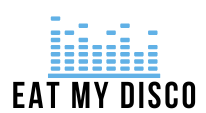In a world where avocado toast can cost more than a mortgage payment, keeping tabs on finances is more crucial than ever. A financial self-check isn’t just a fancy term; it’s a lifeline to help anyone steer clear of the money traps lurking around every corner. Think of it as a routine check-up for your wallet—no stethoscope required!
Table of Contents
ToggleUnderstanding Financial Self-Check
A financial self-check serves as a critical practice for assessing personal finances. Regularly evaluating one’s financial health can prevent significant money-related issues.
Importance of Financial Self-Check
Assessing financial situations helps individuals recognize spending habits and identify areas for improvement. Monitoring finances also fosters accountability, making it easier to stick to budgets. This evaluation prevents unnecessary debt and encourages savings for future goals. By conducting regular self-checks, individuals often feel empowered to make informed financial decisions. Ultimately, regular self-assessment establishes a foundation for long-term financial security.
Components of Financial Self-Check
Several key components contribute to an effective financial self-check. Tracking income provides insight into money flow, allowing for better management of resources. Analyzing expenses reveals spending patterns that might otherwise go unnoticed. Reviewing debts identifies outstanding balances and the feasibility of repayment plans. Evaluating savings balances ensures individuals remain on target for their financial goals. Lastly, setting short- and long-term financial goals aligns spending with priorities, creating a clearer path to financial success.
Tools for Financial Self-Check
Various tools can enhance the effectiveness of a financial self-check. These resources simplify tracking finances, analyzing spending habits, and creating actionable plans.
Budgeting Apps
Budgeting apps streamline expense tracking with user-friendly interfaces. Applications like Mint, YNAB, and EveryDollar consolidate financial data, enabling users to categorize spending. Users can set monthly budgets to meet specific financial goals. Real-time notifications alert individuals when they exceed budget limits. Many of these apps include features that offer spending insights. Such insights promote informed choices. Ultimately, budgeting apps empower users to take control of their finances.
Financial Planning Software
Financial planning software supports comprehensive assessments of personal finances. Programs like Quicken, Personal Capital, and Tiller enable individuals to monitor investments, track expenses, and project future earnings. Users can evaluate their net worth and identify areas for growth. These tools offer robust capabilities for forecasting financial scenarios, contributing to informed decision-making. Integrated goal-setting features allow users to align their financial strategies with personal objectives. Utilizing financial planning software aids in crafting a holistic view of long-term financial health.
Steps to Conduct a Financial Self-Check
Individuals must follow certain key steps to effectively conduct a financial self-check. Start with a thorough examination of income and expenses, then assess debt and savings.
Analyzing Income and Expenses
Begin by documenting all sources of income. Include salaries, bonuses, and additional earnings. Next, list fixed and variable expenses, such as rent, utilities, food, and entertainment. This process reveals spending patterns and highlights areas for potential cuts. Focus on categorizing expenses into essentials and non-essentials. Afterward, compare total income against total expenses to assess financial health. Identifying discrepancies enables individuals to adjust their budget effectively. Regularly updating this analysis helps maintain a clear financial picture.
Assessing Debt and Savings
Evaluate current debt levels, including credit card balances, loans, and other liabilities. Listing each debt, alongside respective interest rates and minimum payments, aids in prioritizing repayment strategies. Assess savings balances across accounts, such as checking, savings, and investment. Calculate emergency savings to ensure adequate coverage in times of need. After reviewing both debt and savings, individuals can create targeted goals for debt reduction and savings growth. Setting specific savings targets strengthens financial stability and guides spending decisions.
Common Mistakes to Avoid
Individuals often make mistakes during their financial self-checks. Recognizing these pitfalls enhances the evaluation process and leads to better financial health.
Overlooking Small Expenses
Small expenses can accumulate quickly, leading to significant impacts on budgets. Many people overlook minor costs like coffee purchases or subscription services. Tracking every expense, no matter how small, provides a complete overview of spending habits. By maintaining awareness of daily expenditures, individuals gain insight into areas where they can cut back. Regularly reviewing these minor purchases highlights spending patterns that often go unnoticed. Adjustments in these areas can lead to substantial savings over time.
Ignoring Savings Goals
Savings goals play an essential role in achieving long-term financial stability. Individuals who ignore these goals may struggle to build an adequate safety net. Setting specific savings targets encourages disciplined saving habits. Prioritizing short-term and long-term goals helps clarify financial decisions. Monitoring progress toward these savings goals fosters accountability and motivation. Individuals should regularly revisit their targets to make adjustments as necessary. By emphasizing the importance of these goals, individuals can work toward financial security with a clear purpose.
A financial self-check is more than just a review; it’s a proactive strategy for personal financial health. By regularly assessing income, expenses, debts, and savings, individuals can gain clarity and control over their financial situation. This practice not only promotes accountability but also empowers them to make informed decisions that align with their long-term goals. Utilizing budgeting apps and financial planning software can further enhance this process, making it easier to track progress and adjust strategies as needed. Embracing this routine can lead to improved financial stability and a more secure future. Taking the time for a financial self-check is an investment in one’s financial well-being.




